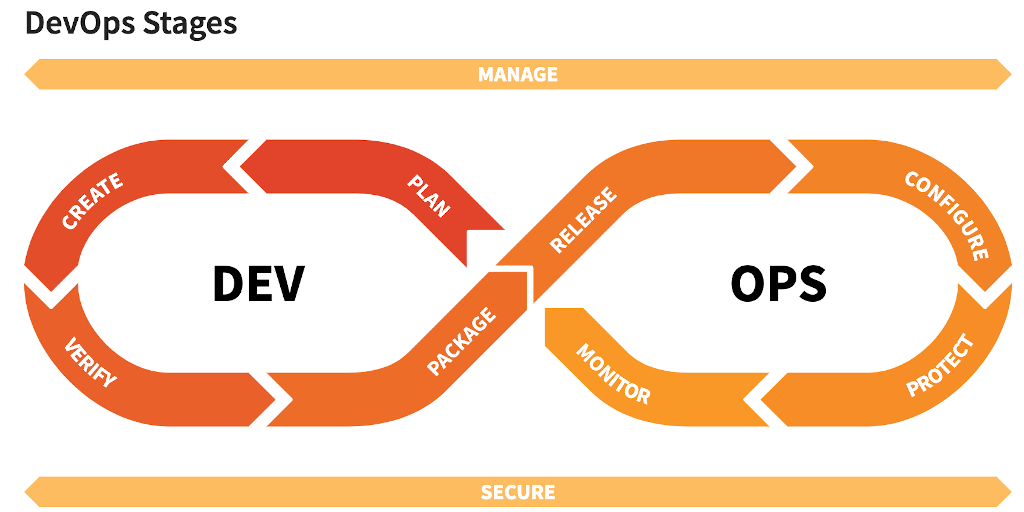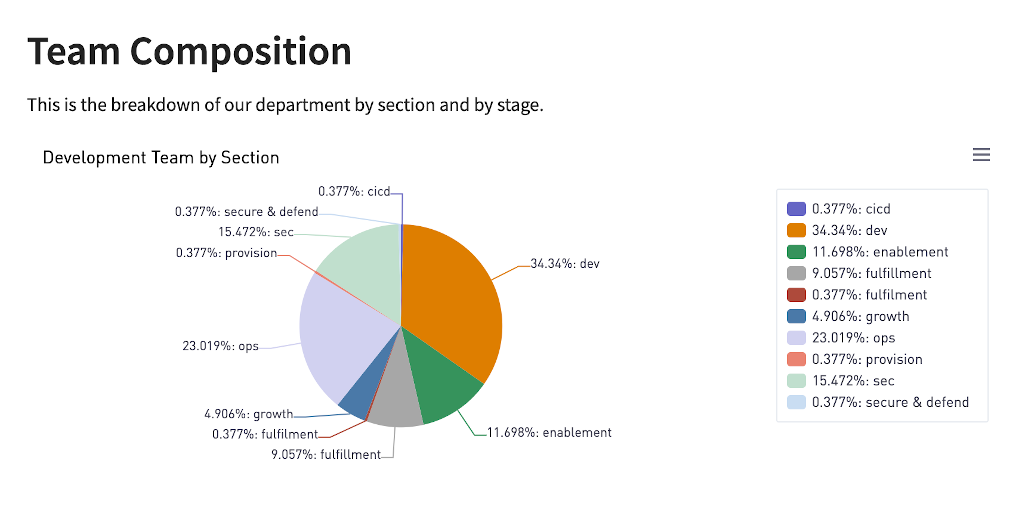 Imagine you knew absolutely everything there was to know about the company you buy from. I’m talking about their goals, values … even the challenges they face. It would be pretty radical right?
Imagine you knew absolutely everything there was to know about the company you buy from. I’m talking about their goals, values … even the challenges they face. It would be pretty radical right?
Or rather, the company in question would be radically transparent.
Radical transparency is a phenomenon that’s gaining traction, and this post is here to tell you why. I’ll be taking a look at what radical transparency means and how the approach is put into practice at Gitlab, a DevOps platform founded upon an open-source ethos.
To jump to a specific section of the post click the appropriate link below:
- What is radical transparency?
- A brief introduction to GitLab
- What does radical transparency look like at Gitlab?
- A look into GitLab’s employee handbook
- What does radical transparency look like in practice?
- Radical Transparency: Concluding thoughts
What is radical transparency?
In simple terms, radical transparency is used in business to promote openness across the organization. It promotes a culture based on honesty, communication, and, ultimately, everyone knowing everything … all the time. Radical transparency in business means creating systems that are open, without being afraid of other people (or your employees) seeing what you do or say.
The idea of radical transparency was first put forward in 1993 by Ray Dalio, founder of the world’s biggest hedge firm Bridgewater Associates. In fact, Dalio’s approach to company culture is so niche that the team here at Process Street wrote a whole blog post on Bridgewater Associates back in 2018 which you can find here.
In his book Principles, which was published in 2017, Dalio highlights how his personal principles encouraged him to embody radical transparency at Bridgewater Associates. Supposedly, an entrepreneur’s personal principles can demonstrate why they foster the company culture the way they do. This was certainly the case for Dalio whose focus on transparency can be in his concepts of:
- Radical truth – The prioritization and focus on the utter truth at all times.
- Radical transparency – Answers can only reach the truth if they have all the information and data available to the person searching for the answer.
- Getting in sync – Creating shared truths that teams can operate around to maximize the effectiveness of these truth-realizations in a practical sense.
As you can see for Dalio, radical truth relies upon radical transparency, and together they form the company culture. The concepts of Radical Truth and Radical Transparency are evident in the 5 points Dalio makes to describe the company culture he strives to create. For Dalio, the company culture involves having employees who:
- Work for what they want and not for what others want of them
- Come up with the best independent opinions they can muster to move toward their goals
- Stress-test their opinions by having the smartest people they can find to challenge them so they can find out where they are wrong
- Are wary about overconfidence, and good at not knowing
- Wrestle with reality, experiencing the results of their decisions, and reflecting on what they did to produce them so that they can improve
Ultimately, Dalio’s aim was to establish a culture of openness:
“I want independent thinkers who are going to disagree”… “The most important things I want are meaningful work and meaningful relationships. And I believe that the way to get those is through radical truth and radical transparency. In order to be successful, we have to have independent thinkers—so independent that they’ll bet against the consensus. You have to put your honest thoughts on the table.” – Ray Dalio, Principles
Advantages of radical transparency:
- You understand what people are actually doing. This can be seen as a positive or a negative depending on who you are. As an employer, having access to your employee’s activities during their working day is likely a good thing. However, as an employee, this could be stressful.
- Problems are public. Although this is an advantage, it could have a negative impact on how your customers interact with your company.
- Goals are public. While this is good as it ensures all of your team knows what you are working toward, at all times. Having public goals means that you are also showing your competitors your game plan.
- Competitive threats are known. This has the same issue as the previous point.
- The company’s finances are public. Although advantageous for accomplishing “Radical Truth” (Ray Dalio’s concept) this point could cause problems within the team. As a woman, I think this level of transparency is a great thing and will help pressure companies to bridge the gender pay gap. But … I also see how it could cause conflict amongst teams where inequality or preference is evident.
Disadvantages of radical transparency:
- Not being ready. Forcing radical transparency without proper processes in place to deal with the level of access customers will have to your company could be risky. This relates back to the “problems are public” point in the advantages.
- Not everyone likes it. In order for radical transparency to work the whole team needs to be on board. So, if an employee doesn’t feel comfortable with the heightened level of transparency – the entire company culture of transparency would be flawed.
- Performance anxiety. This relates to the “understanding what people are doing” point above. For employees, knowing that their progress is constantly being monitored … and judged could cause anxiety. This in turn could cause them to overwork or feel overwhelmed and withdraw themselves.
- Getting bogged down. The constant scrutiny and pressure to show up in all areas of working life could cause employees to feel bogged down.
Each of the above disadvantages is easily tackled by taking things one step at a time. If you do not feel ready for the all-encompassing culture of radical transparency: start by introducing transparency into each independent area of your business, one step at a time.
For example, you could start by being transparent about your company’s goals and OKRs. To do this you could create a Slack channel where you share progress towards goals and ask for employee input in setting future targets.
A brief introduction to GitLab
I briefly introduced Gitlab at the beginning of the post. But, considering that the company’s handbook and central repository has over 8000 pages of text – a brief introduction simply isn’t going to cut it. For a thorough understanding of Gitlab, check out the Youtube video below. Or, for a bitesize lowdown of the company keep scrolling.
In 2011, GitLab’s open-source project began. The company began in the Ukraine with just two people and, at the time of writing this post, it had 1281 remote employees, based in 69 countries.

Having everything in one place means that you can reduce context switching, cut back on your plugin nightmares, and reduce your companies output. With GitLab you get issue tracking, repository, leading CI solutions, SaaS, and DaaS.
While the software may appear to be geared towards tech-savvy coders and developers, even someone with limited code experience can appreciate the company’s radical approach to transparency.
What does radical transparency look like at Gitlab?
For GitLab, transparency is about sharing great software, documentation, examples, lessons, and processes with the global community. By embodying the spirit of open source, the team at GitLab believes that they create more value than they capture.
GitLab makes accessing their company data super easy by using public issue trackers, projects, and repositories to make as much information public as possible.
An example of this is the public repository on their website that contains the company’s handbook, which I’ll go over in detail in the following section. As you’ll see, everything GitLab does is public by default. Check out the GitLab CE and GitLab EE issue trackers as well as their marketing and infrastructure for a preview.
*Issue trackers are advanced tools for collaboratively developing ideas, solving problems, and planning work.
GitLab believes that transparency creates awareness and allows them to recruit employees that care about their values. They believe that a culture of transparency facilitates faster feedback from outside people both inside and outside the company. Ultimately, for GitLab, transparency makes collaboration easier.
However, there are some exceptions. Like the material that is not public by default is documented. As they move towards becoming a public company, they know that radical transparency will be key to their success.
As you have probably realized, for GitLab, transparency is a priority.
“When we go public, we can declare everyone in the company as an insider, which will allow us to remain transparent internally about our numbers, etc. Everything else that can be transparent will continue to be so.” – GitLab, Values
A look into GitLab’s employee handbook
GitLab’s employee handbook is open to the world. Readers (and employees) can make a merge request to suggest improvements or add clarifications. Or use issues to ask questions.
The following section will take a look at the handbook in more detail.
Company
Within the Company section, GitLab openly shares more information than most companies. It’s projects, strategy, direction, and metrics are discussed openly and can be found within their website. Within the “company” section of the handbook you can find the full lowdown of GitLab’s history, a detailed explanation of its values, and the reason behind each of them.
You can also check out the company’s OKRs, KPIs, communication methods, watch previous meetings, and even get to know the CEO, Sid Sijbrandij.
People Group
The People Group section of the handbook’s main purpose appears to be to provide support for GitLab’s employees. This section is designed to make employees’ lives easier. In the very first paragraph of the front page, Gitlab encourages its employees to reach out with any questions.
It is in this section that Gitlab’s relationship with radical transparency really shines through. Similar to Ray Dalio’s approach, GitLab’s transparency is more of a culture and philosophy than a fixed method or framework. The “Diversity and Inclusion” chapter within the People Group section provides a good example of this:
“We strive for a transparent environment where all globally dispersed voices are heard and welcomed. We strive for an environment where people can show up as their full selves each day and can contribute to their best ability. And with over 100,000 organizations utilizing GitLab across the globe, we strive for a team that is representative of our users.”
Within this section, you can also find anything relating to finances, including information concerning the max expense budget (which is $5,000 ). Alongside all things onboarding and offboarding, travel advice, code of conduct resources, and more.
Engineering ⚙️
The Engineering section covers everything from customer support to security, and from growth to quality management. In order for all of the engineering team to stay in contact, Gitlab uses a multimodal communication platform that outlines the channels that they should broadcast to. Many of these channels are viewable online on Gitlab’s communications page.
The Engineering section is also where GitLab specifies their development practices, the vision of the development team, and its mission. The image below portrays how the development team at Gitlab is broken up.
In this section of the handbook, you’ll find information about the open-sourced nature of the company. This section instructs employees on how to create an open-source project, contribute to a third-party open-source project, and use a third-party open-source code in a GitLab’s project.
Marketing
The marketing team at GitLab consists of Corporate Marketing, Revenue Marketing, Strategic Marketing, Demand Generation, and Inbound Marketing. This section explains GitLab’s marketing strategies, the team’s aspirations, and issues they face – you can even view the marketing calendar!
Here you can find real insight into how GitLab runs their blog, website, education programs, and pretty much everything to do with marketing. My colleague here at Process Street, Leks Drakos, has written a detailed post about marketing at GitLab, check it out here: 5 Essential Lessons I Learned From GitLab’s Marketing Playbook.
Sales
The Sales section of the handbook serves as the home base for all things sales-related. You can find a wealth of resources from all of the teams in the sales department. These include Enterprise Sales, Commercial Sales, Customer Success, Channel Partners, Alliances, Field Operations.
This is where you can learn not only how the team communicates with one another, but also how you can reach GitLab to collaborate. This demonstrates the extent of the company’s dedication to transparency by revealing how they drive their sales success. GitLab provides data, reporting, analytics, and actionable insights to leadership, all of which could be useful to your own sales strategy.
Finance , Product , and Legal
The Finance, Product, and Legal sections of the handbook don’t articulate examples of radical transparency in a clear manner. Therefore I’ve chosen not to dedicate an entire section of the post to each area.
However, I did encounter a few interesting facts when reading through each of these sections. For example, within the finance section, and going on Ray Dalio’s concept of radical transparency I was expecting GitLab’s transparency to go as far as to share employee earnings … it doesn’t.
The product section helps employees understand the Product principles, processes, and categorization. It also directs the wider GitLab team on how to communicate with Product Managers. It does not provide info on what GitLab is currently building and working on.
Pro-tip: To see the overall direction of the product visit this page: Product Direction.
How can employees bring value to a meeting they do not attend?
This comes back down to the reliance on documenting absolutely everything. When employees rewatch the meetings they are encouraged to add notes and memos to the discussion and …as you’d expect – anything that is added can be accessed by the whole team (well anyone actually).
This brings me to my next point: if employees don’t show up to meetings when they occur, why would they take the time to rewatch it?
Because employee activity can be tracked, monitored, and accessed by everyone here. Each employee can be traced and people (and the employee’s bosses) can see how they are spending their working days. Meaning that if an employee doesn’t rewatch that meeting and provide some feedback, everyone will know about it. This for me raises interesting questions of consent: Do employees have to consent? Can they not consent? Given that this post is already verging on hefty the answers to these questions will have to wait.
Radical Transparency: Concluding thoughts
I know … this may seem a bit scary at first. But, in time I am certain that the positives of radical transparency will conquer that fear. Or will it?
I am still not 100% sold…
Let’s say that this afternoon I get informed that here at Process Street we are embodying the radical transparency company culture from next week. These would be my key concerns:
For starters, I would worry about all of our activity – given that we work from home, or at least not on company property – being monitored, tracked, and available to anyone.
Should the same level of tracking occur on company property I wouldn’t mind so much, as it would be expected as I’d be using the company equipment. However, when at home I’m unlikely to remember to switch to my personal Chrome account every time I’m in need of a break. Would this mean that everyone would have access to the things I search for when taking that break? Would everyone have access to what I’m filling my stocking with this Christmas? .. or even worse find out about my love of talking dog videos on Youtube?
I also question the efficiency of tracking at GitLab. If tracking solely tracks an employee’s activity within the app, then the effectiveness it actually has for adding value to skipped meetings is debatable. Could GitLab’s employee’s not “play” the video on mute and not pay attention? I suppose a counter-argument to this is the fact that GitLab employees are encouraged to add “memos” and notes to meetings, so they’d have to watch at least some of it.
I’m interested to know what the employees feel they get from this level of radical transparency. What, in their opinion, are the benefits?
In saying this, I do feel that radical transparency as an approach is a step in the right direction. And, when done right it promotes a company culture built on equal and honest principles – which is a good thing.
To finish up let me leave you with this final quote from Ray Dalio, the brain behind radical transparency:
“I think the greatest tragedy of mankind is that people have ideas and opinions in their heads but don’t have a process for properly examining these ideas to find out what’s true. That creates a world of distortions. That’s relevant to what we do, and I think it’s relevant to all decision making. So when I say I believe in radical transparency, all I mean is we take things that ordinarily people would hide, and we put them on the table, particularly mistakes, problems, and weaknesses. We put those on the table, and we look at them together. We don’t hide them.” Ray Dalio
Have you experienced radical transparency in the workplace? We’d love to hear your thoughts about radical transparency in the comments. Who knows? You may even get featured in an upcoming article!








Molly Stovold
Hey, I'm Molly, Junior Content Writer at Process Street with a First-Class Honors Degree in Development Studies & Spanish. I love writing so much that I also have my own blog where I write about everything that interests me; from traveling solo to mindful living. Check it out at mollystovold.com.